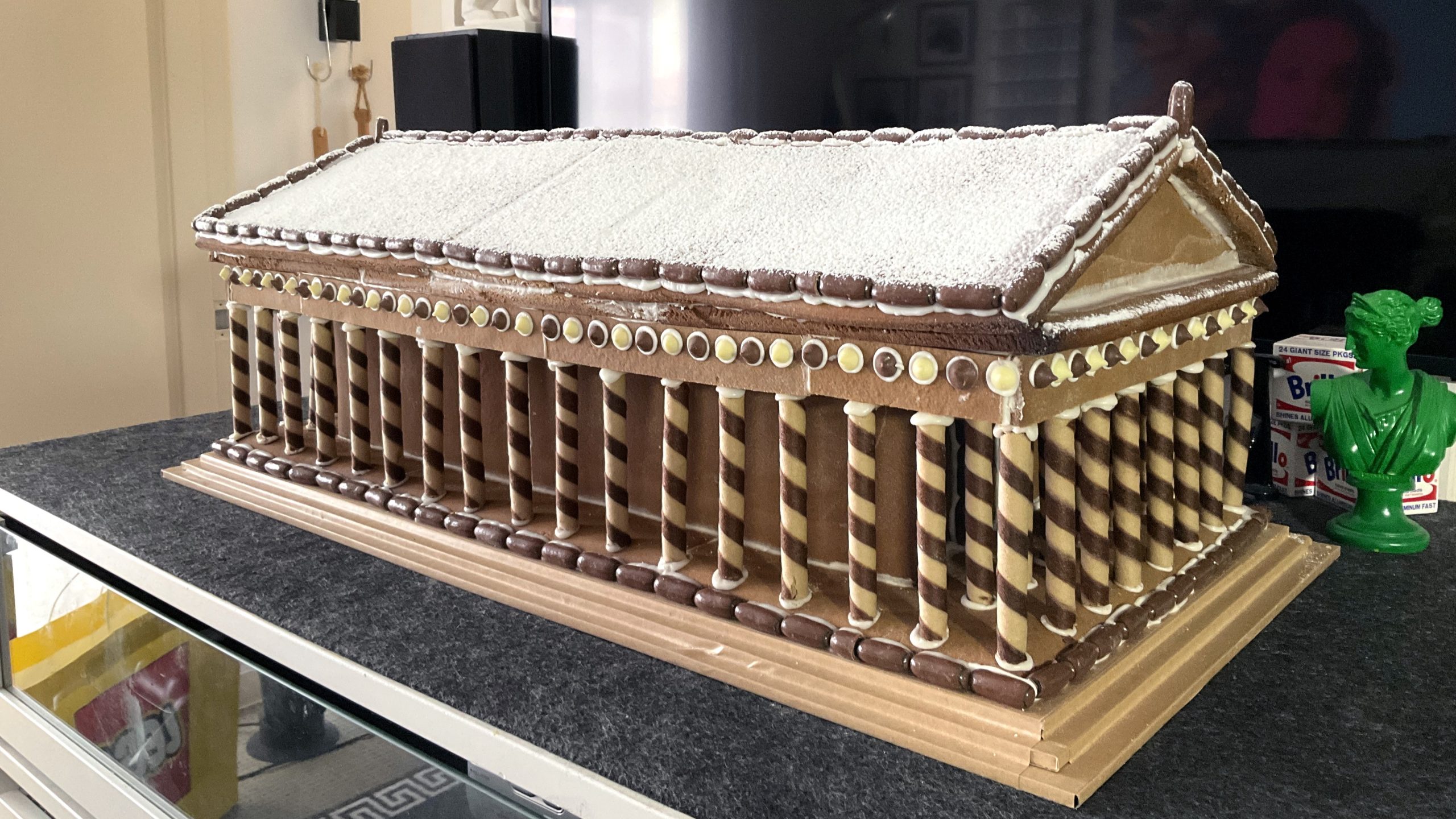Have you ever seen the ancient site of the Parthenon in Athens, Greece immortalised in gingerbread for Christmas?
You can now thanks to the creative genius of Australian ‘Lego Classicist,’ Pop-Artist and Historical Archivist, Liam D. Jensen.
Standing at 23.5cm tall and 62cm long, Liam’s six-kilogram gingerbread house in the shape of the Parthenon is a sight to behold.
From the detailed columns to the snow-covered roof, we just had to speak with Liam about the idea behind his Parthenon creation and this is what he had to say.


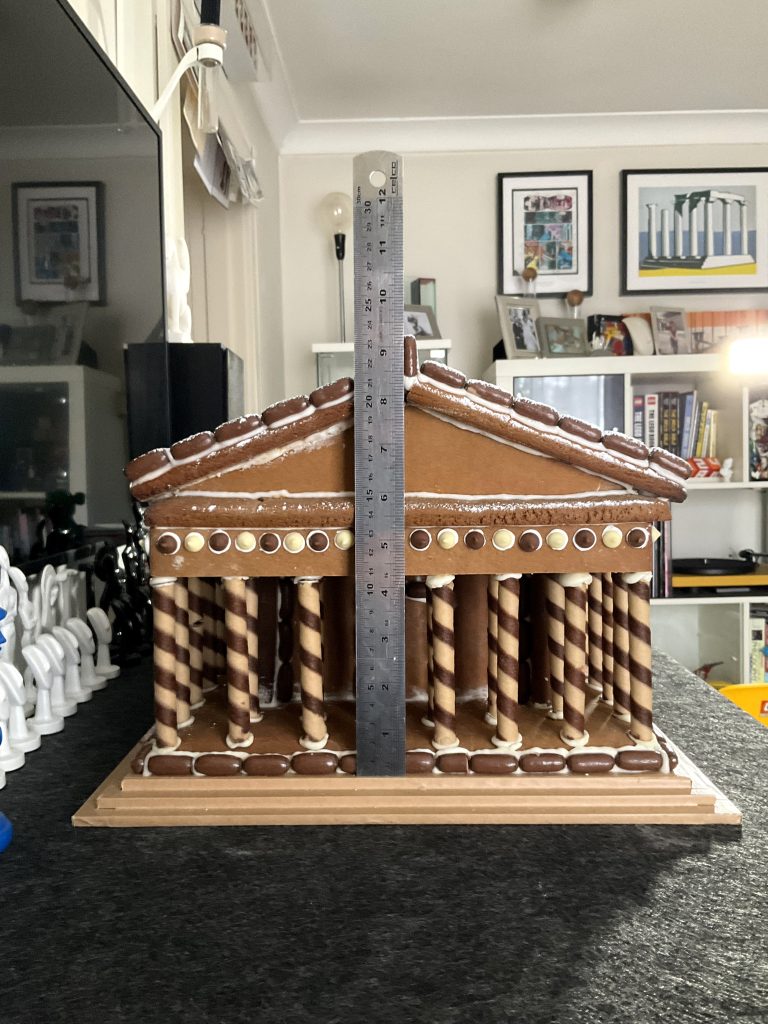
What have you made?
This Christmas I have made a Gingerbread House in the shape of the Parthenon in Athens, Greece. It is 62 cm long, 28 cm wide, 23.5 cm tall and weighs over 6 kilograms.
The gingerbread is made from my own recipe that I have been perfecting since I was 14 years old. It includes ginger, butter, treacle, eggs, flour, cinnamon and sugar but the details are secret!
I kept the whole construction very simple, stylised and not too much literally correct detail as I wanted it to be a gingerbread house in the spirit of the Parthenon (rather than a model Parthenon made of gingerbread). I stuck to natural colours of the ingredients and no added food colouring or any brightly coloured lollies. It is decorated with white mint icing, chocolate bullets and the columns are made with Greek cream-filled wafer stick biscuits and then finished off with a dusting of icing sugar snow on top.

Why have you decided to make a Parthenon out of gingerbread?
I have made traditional gingerbread houses a number of times since I was about 14 and I have wanted to make the Parthenon for years as I have always thought it would make a great looking gingerbread house for Christmas. This is actually my second attempt, as I first made one in 2020 but half way through preparing it I was rushed into hospital for emergency heart surgery. After I got out of hospital, I salvaged the parts I prepared to make a smaller Ancient Greek temple style gingerbread house. But it was not a true Parthenon homage, so this year I wanted to do it again properly.
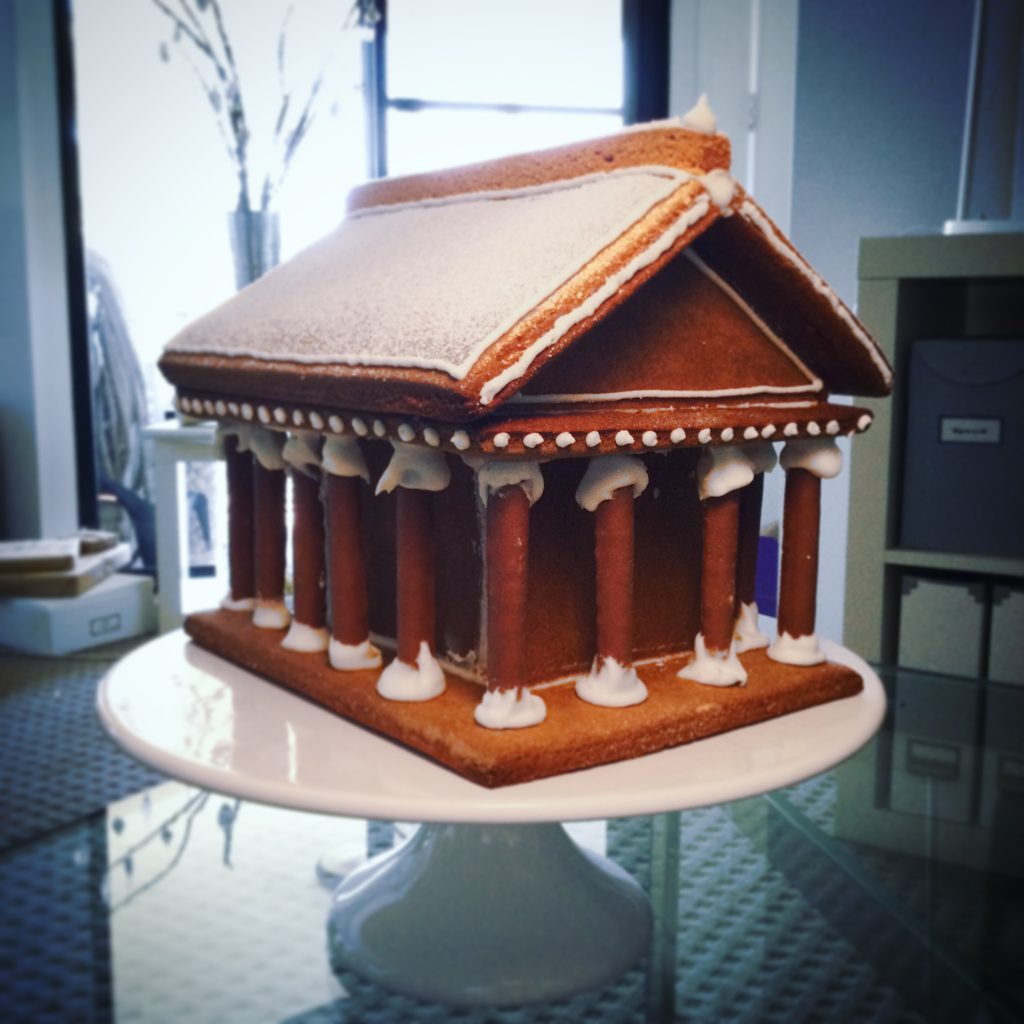
What was the baking process like?
It took a lot of preparation. First, I downloaded a diagram of the Parthenon and printed it out on four sheets of A4 paper and taped them together to make a floorplan. After that, I constructed a base made out of food-safe corrugated board and made it three layers thick to make it strong enough to take the weight of the full construction. I then made and baked sheets of gingerbread 28 by 21 cm and cut them to the right sizes to piece together and glued them with icing. The roof was the hardest part as it needed many triangular a-frames to reinforce the weight of the sheets of gingerbread.
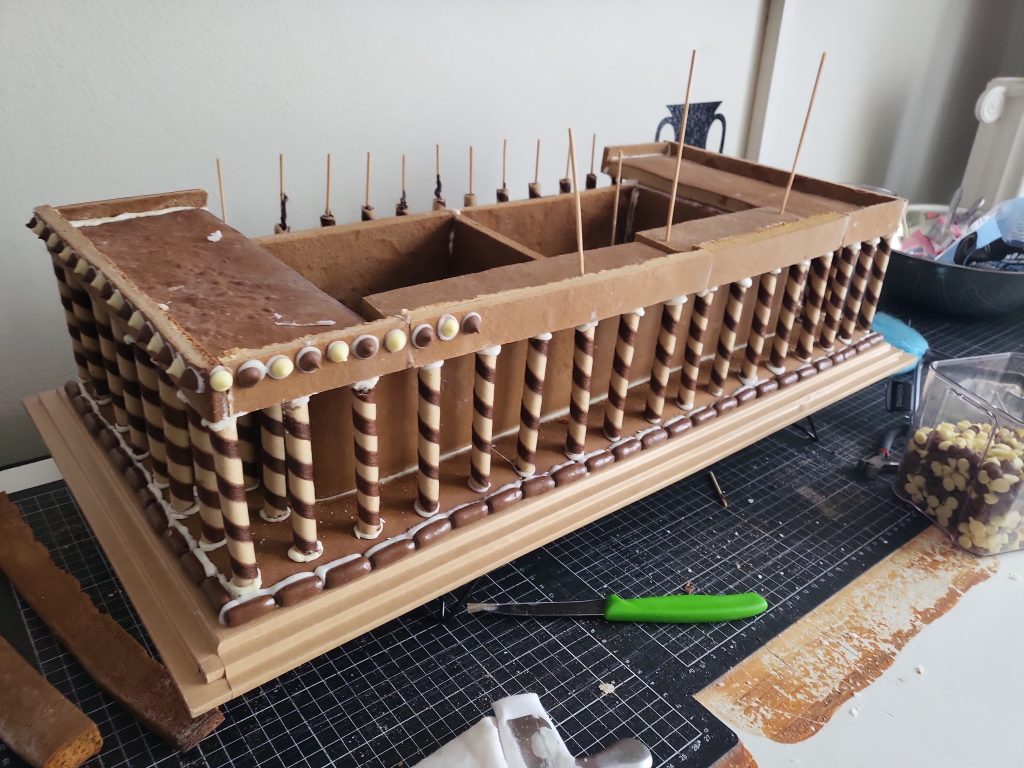
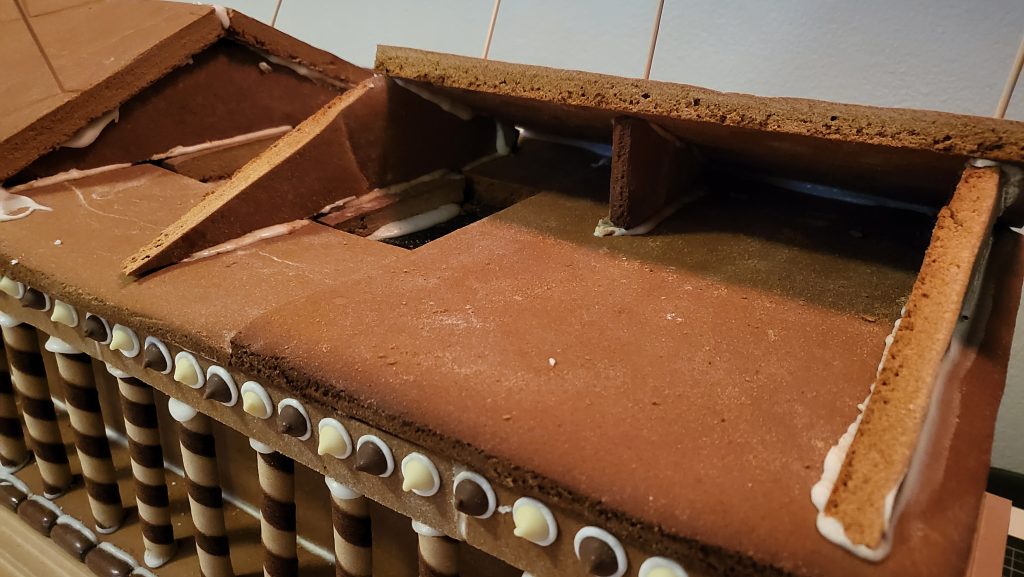
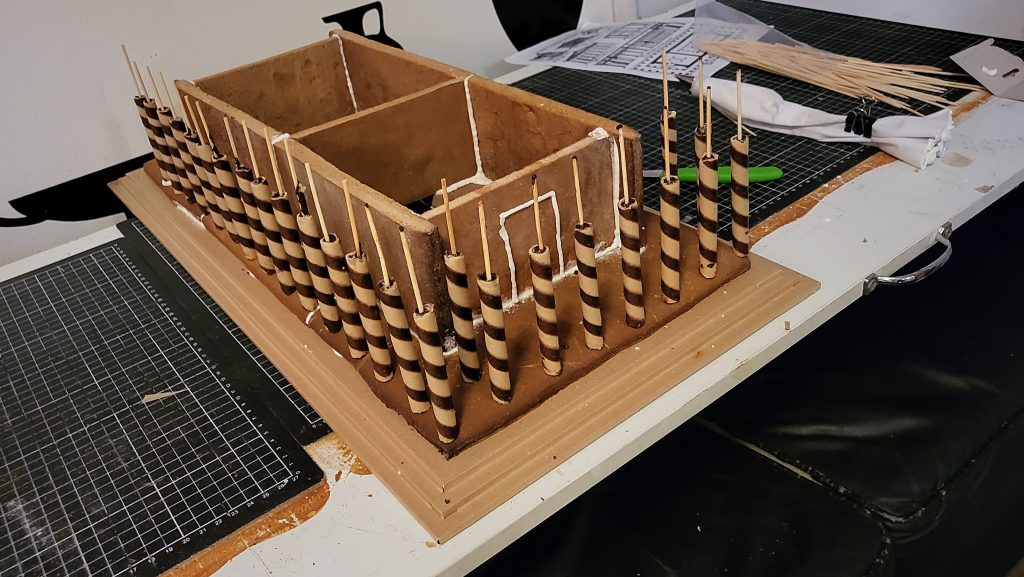
What is your connection to the Parthenon?
My connection to the Parthenon goes all the way back to my sixth birthday when I arrived in Greece for the first time and my parents took me to see the Acropolis and Parthenon. Even though I was too young at the time to really know it, my time spent in Greece and experiencing not only the ancient history there through the ruins, but also modern Greece, at such a young age has stayed deep within me and has influenced my life in so many big and small ways.
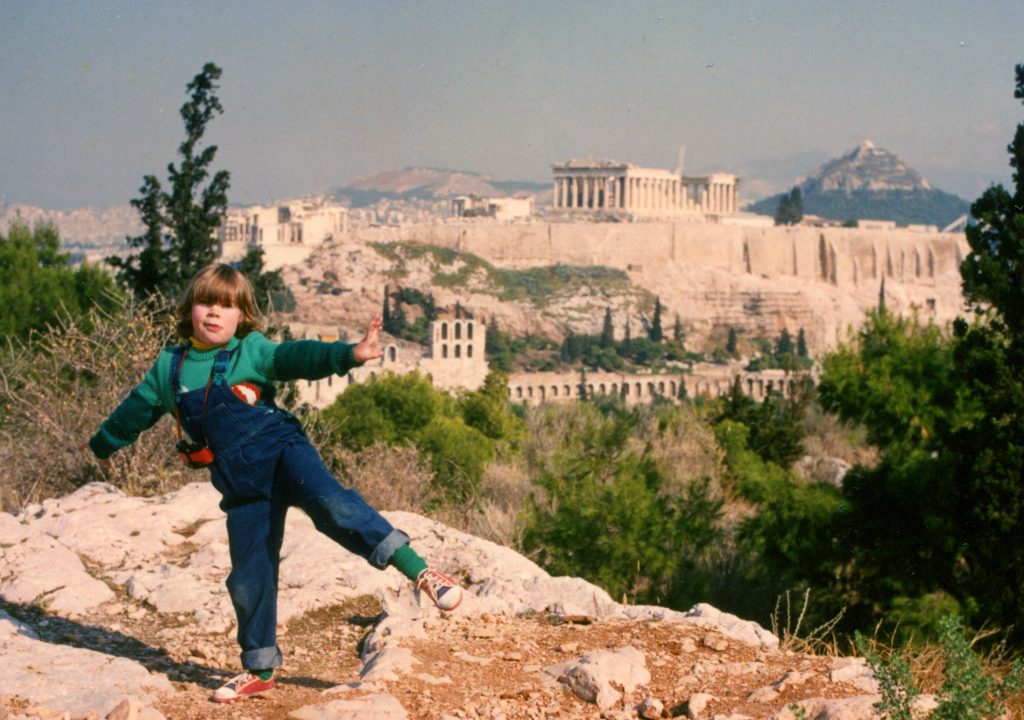
How will you be celebrating Christmas this year?
This year I will be spending Christmas with my family. We like to keep things simple as I’m in a small family (my parents and my younger brother) but we also like to make it meaningful and joyous all through the December season, starting with celebrating St. Nicholas’s Day on the 6th of December.
What will you do with the Parthenon after Christmas?
I decided to donate the Gingerbread Parthenon to my friends at the Chau Chak Wing Museum at the University of Sydney, who look after the largest ancient Greek collection in the southern hemisphere. It was received with great excitement at the museum when I delivered it in person and the Deputy Director Dr Paul Donnelly said “It looked just right in its proportions!”
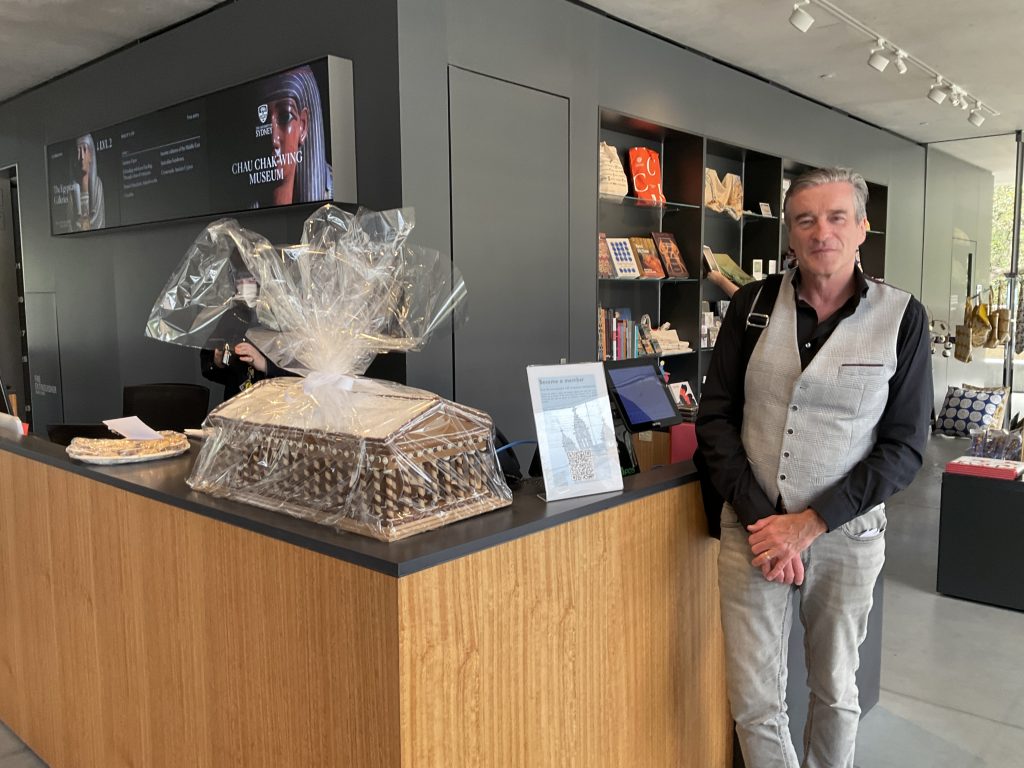
Is there anything else you’d like to say?
This has been an amazing experience. Even though I made this from gingerbread it has taught me so much about the incredibly sophisticated architecture of the real Parthenon. I have made many notes on how I want to improve my process of making one again next year, but I don’t know who I will give it to yet!

